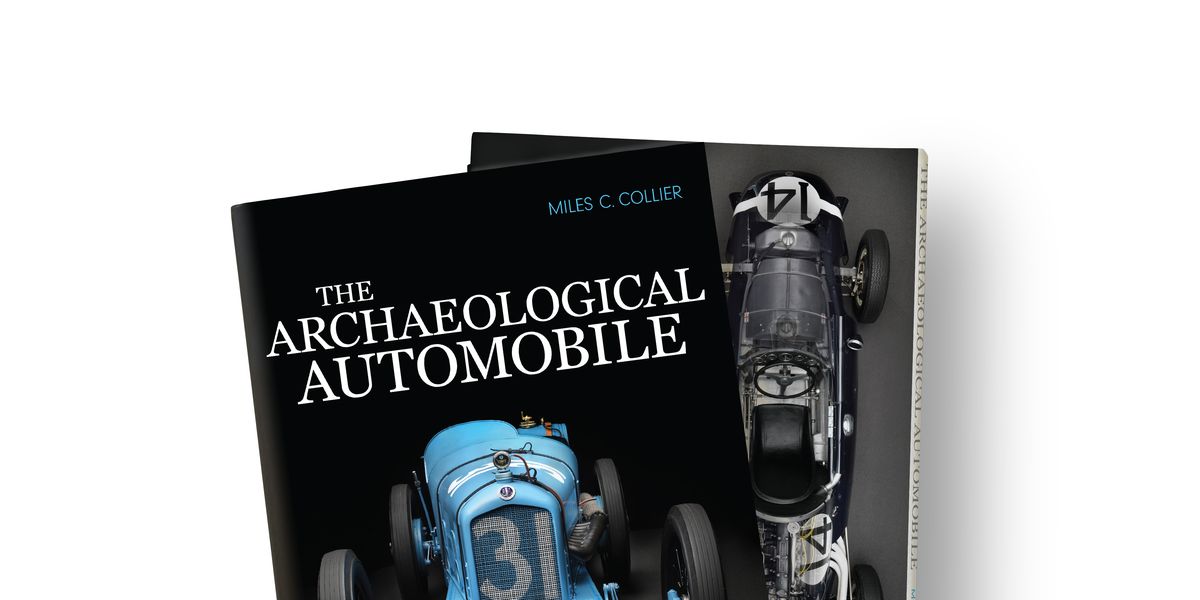
Miles Collier is one of the foremost collectors of historically significant vehicles. His collection, housed in his Revs Institute in Naples, Florida, features over 100 important sports and racing cars that span and represent the history of the automobile. The institute is committed to documenting, preserving, and fostering an understanding of the important role that the car has played in world history and culture, and shifting our perspective on the vehicle as an artifact or object worthy of examination and celebration, just like, as he said in an interview with Car and Driver, “the finest French Impressionist paintings.”
In keeping with that mission, Collier has written a new book, The Archaeological Automobile, in which he makes a case for a fresh perspective on considering, preserving, and analyzing vintage vehicles.
“The first thing I want anybody to get out of my book is that old cars are continually changing, and the idea that you can stop the clockwork of the universe is patently not true,” Collier said. “Any restoration is a temporary thing. If we look with a sufficiently granular perspective, each car is a unique object, with its uniqueness caused by the forces of use and time.”
With careful documentation, and a melodic sense of language, his book works to demonstrate this approach, which involves utilizing the individuality of specific cars to further understand the role of the automobile in society.
“The core idea is that you can apply an archaeological mindset—looking for clues impounded in the physical fabric, the materiality of the automobile,” he said. “Archaeology is the science, it’s the discipline of memory. And what we’re looking at when we’re looking at relics from the past is frozen memories of time itself. This kind of mindset causes these memories to reoccur in the present.”
It’s a rather esoteric way of thinking about a 1989 Trabant, or a 1950 Cadillac Series 61, to name just two disparate cars in his collection. But if one leans into the concept, it opens many perceptual doors. And old cars—with their lives embedded and writ large in every scraping dent, grease-stained passenger seat, and hastily repaired cooling hose—become time machines that transport us back through the decades, as well as exemplars and repositories of the historical (and ongoing) stories they hold.
This has profound implications for the preservation and examination of vintage vehicles, especially standout and specific vehicles that—like those inducted into the National Historic Vehicle Register—have a very particular story to tell about the world. And in order to read and analyze and understand this story, we need to adhere to the idea, as he said, “that every automobile, after time, is an individual,” and we need to try to avoid subjecting them to “an anonymizing restoration.”
“If you try to remove all the flaws—the individuality of an automobile—it means you are reducing the car from its archaeological individuality to just a member of its class,” he said.
Of course, there are cases in which a car is so deteriorated there is no choice but to restore it. At that point, Collier advises that owners and craftspeople consider how to evoke the time and history of the car. “You want to restore the car as as big a piece of poop today as when it was made,” he said. “It’s still a fictional restoration, because we can never know how it was built in the day; the past is lost to us. But we can at least create a narrative in our restoration that is evocative of the truth.”
In this, he practices what he preaches. So, when he was restoring the fiberglass on his 1966 Porsche 906 Carrera 6, he followed a strict protocol that adhered, quite literally, to the historical record. “Porsche was notorious for its poor build quality on racing cars. They just wanted them to be fast and reliable,” he said. “So when it was time to bond the original floor to the original chassis, we did it with the usual insouciance. You’ll see all kinds of drips and dribbles from the can of resin and the paintbrush.”
Getting into this process and behavior, according to Collier, catalyzes a distinct form of time travel that is as delightful as it is profound. “Putting your head in that space—why did they do this? What was the benefit?—that puts you in a communion with the people who were doing this back in 1966, and it is transcendent,” he said. “The barrier between today and the past gets amazingly thin. Through performative work, you are going down a particularly intimate and impactful experience with lost time—with communing with the people who actually did this stuff—and it’s a thrilling experience.”
Reading his book has much the same effect.
This content is created and maintained by a third party, and imported onto this page to help users provide their email addresses. You may be able to find more information about this and similar content at piano.io
#Collector #Miles #Collier #Considers #Archaeological #Automobile
Source link





